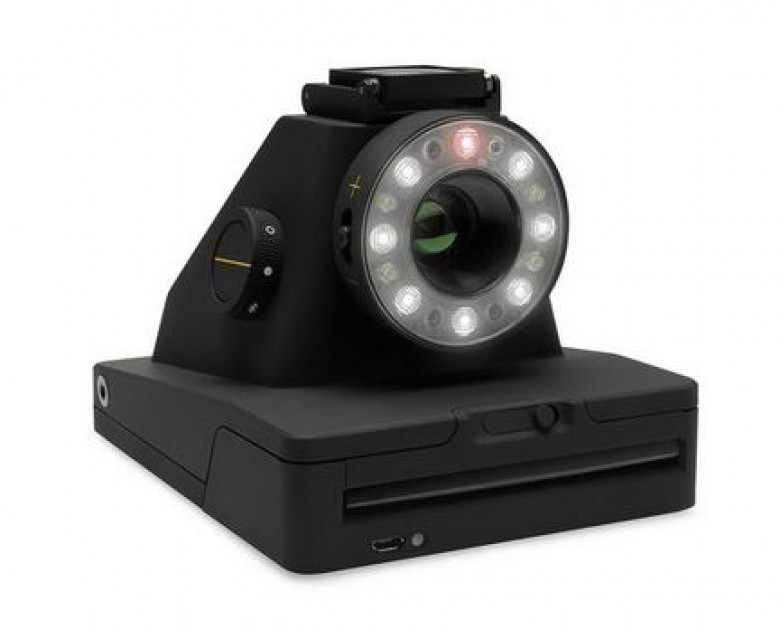In 2008, Polaroid discontinued the production of instant film which was formerly 50,000,000 packs per year. Impossible Project, a Dutch-based start-up, stepped in to continue the manufacture of this film which ensured the continued the use of 200,000,000 instant cameras worldwide. Impossible Project consolidated the entire Polaroid campus into one building. Steve Herchen, the Chief Technology Officer joined in 2013 after working at Polaroid for 30+ years. He has 40+ years background in the chemistry of instant photography.
The components with the active-imaging chemistry inside are produced in their German facility: the light-sensitive negative and the positive receiving sheet, which is where the image an individual sees is deposited. When the 12 light sensitive negative layers are stacked, they are less thick than a single human hair.
The I-1 camera was developed over the course of 8 years after Impossible Project developed their own unique blend of instant film, which was produced with Polaroid machinery purchased for $3,100,000, and after their factory warehouse, Building Noord, in Enschede, Netherlands, was leased from Polaroid.
Serious Polaroid users will appreciate the I-1 camera because as Herchen says, “it is a 100% pure analog instrument.” Oskar Smolokowski, the CEO says “we had the opportunity to design the instant camera for 2016. We really wanted to do that, rather than do a nostalgic reissue.” The I-1 camera uses the Polaroid film format of 20 years ago while stepping into the software era with an app that guides users in the use of the analog medium.
The design process for the I-1 was saturated in realism; Smolokowski says “Jasper Morrison [a leading English product and furniture designer] comes at the camera at a completely different angle, we had to work quite a lot to make the camera a product and not a dream, and get the design out of the way, and make it very honest so that the main shape of the camera is actually dictated by the technical requirements of the light. So it is kind of the minimal shape needed to achieve an instant camera.”
The ring-flash allows individuals to take portraits and selfies with a full manual mode. The iPhone app allows people to control their camera with their phone and gives users tutorials about analog photography.
How is the I-1 better than the old instant cameras? It has better auto-focus and a mechanical viewfinder. Here is my unboxing of the I-1. The camera ($300), and an 8-shot instant film pack in Black and White or Color ($20). I would recommend buying the Impossible Project Frog Tongue, a worthwhile accessory ($12.74) which fits into the bottom of your camera, and shields your film from overexposure when it is developed. In the course of learning how to use this camera, I wasted 6 shots which developed black crescent moon shaped imprints in the center because I didn’t properly protect the film from light while my shots print.
The I-1 is very vibe oriented. According to Smolokowski, “The funny thing about the Impossible Project and analog photography is that it was always started by a guy who wasn’t a photographer; it was started by a guy who loved the product, and loved the feeling of shooting something and holding it in his hand. It was kind of the iPhone of its time in the 1970’s and the 1980’s, it was the point-and-shoot camera. And only now when point-and-shoot has new meaning—it has become this photographic experience which we want to give to people." This is worthwhile in an era where my photos are mostly stored on harddrives or in the cloud, and tangibility is severely lacking.

